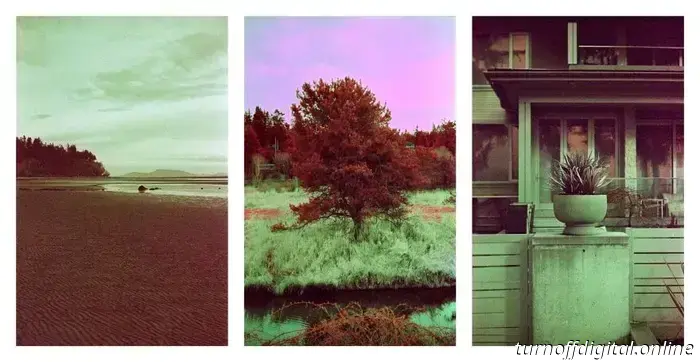
Analog.Cafe › Film and Darkroom › 10 min read by Dmitri. Published on April 8, 2025. Updated on April 16, 2025. Kodak Aerochrome is currently the priciest film available, having been discontinued in 2009, and its limited stock now sells for as much as $400 per roll. The film’s surreal colors and texture are distinct and cannot be fully duplicated. Additionally, it is one of the most challenging films to work with, possessing a narrow dynamic range, capturing visible light in duo-chrome, and being sensitive to invisible light that can act in unexpected ways. Errors are easy to make and can be expensive. This may explain why few have explored this film beyond experimenting with various lens filters. However, today I am pushing those limits with the world’s first attempt at redscaling Aerochrome film¹. In this article: What does "redscaling" entail? What is "greenscaling"? Test exposures and metering. Processing in C-41 and inverting the negatives. Editing. Results. Is this experiment worth repeating? Support this blog and gain premium features with GOLD memberships!¹ — There are no documented prior attempts online, but it’s possible that someone has either intentionally or unintentionally done this in the 83 years since this film was introduced in 1942. Kodak Aerochrome, taken conventionally using a yellow filter.
Aerochrome is among the most costly and challenging films to work with, which might explain why so few have tried this stock. Today, I'm pushing those limits with the first-ever effort to redscale, also known as "greenscale," this color infrared film.